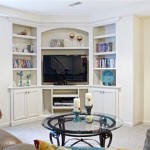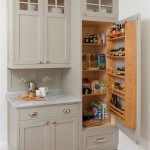How to Put a Sewing Machine in Cabinet Drawers and Cabinets
Integrating a sewing machine into a cabinet setup offers a practical and space-saving solution for home sewers. However, the process requires careful planning and execution to ensure both functionality and safety. This article will guide you through the steps involved in incorporating a sewing machine into your cabinet drawers or cabinets, providing insights into considerations, preparations, and installation processes.
Choosing the Right Cabinet
The first step involves selecting the appropriate cabinet for your sewing machine. Consider the size and weight of your machine, the available space in your workspace, and the overall aesthetic you desire. A dedicated drawer unit or a cabinet with adjustable shelves can provide a dedicated space for your machine. For larger machines, a taller cabinet with ample depth is recommended. Ensure that the cabinet's dimensions allow for the machine to be placed comfortably and accessed without obstruction. Additionally, consider the weight capacity of the cabinet to ensure it can safely support the sewing machine.
Preparing the Cabinet
Once you have chosen the cabinet, it's crucial to prepare it for the installation of your sewing machine. This involves making necessary adjustments to the cabinet's interior to accommodate the machine's size and shape. If using a drawer unit, ensure the drawer slides smoothly and the drawer height can comfortably house the machine. For cabinet installations, consider adding a shelf or modifying existing shelves to create a stable platform for the machine. If necessary, reinforce the cabinet's structure to handle the weight of the sewing machine. Additionally, make sure to remove any obstacles such as shelves or drawers that would hinder the smooth placement of the machine.
Installing the Sewing Machine
With the cabinet prepared, you can proceed with the installation of the sewing machine. This process varies depending on whether you are using a drawer or a cabinet for installation. For drawer units, simply place the sewing machine inside the drawer with the needle facing the front. Ensure the machine is positioned securely and the drawer slides smoothly, preventing any accidental movement. For cabinet installations, consider constructing a platform using plywood or a sturdy board. This platform should be slightly wider than the machine's base and secured to the cabinet's interior. Place the sewing machine on the platform, ensuring it is centered and aligned with the cabinet opening. If the sewing machine has a built-in accessory drawer, you can use this space for storage by placing the drawer under the machine on a platform or by creating a separate drawer within the cabinet.
Safety Considerations
Integrating a sewing machine into a cabinet or drawer necessitates specific safety considerations. The most important concern is the machine's electrical cord and power supply. Ensure that the electrical cord is long enough to reach a nearby outlet and that the outlet is accessible without requiring you to move or disconnect the machine. Consider using a surge protector to safeguard against electrical surges. Additionally, ensure that the machine's power switch is easily accessible and labelled for quick identification. If the cabinet has doors or drawers, ensure they are properly designed and fitted to prevent accidental contact with the machine's needle or moving parts.
Additional Features
To enhance the functionality and convenience of your sewing machine setup, consider implementing additional features. For example, installing a built-in lighting system within the cabinet can illuminate your work area and make it easier to see. You can also incorporate storage solutions to accommodate your sewing accessories and supplies. Building in a dedicated space for a cutting mat, scissors, and other frequently used items can create a streamlined and organized working environment. Finally, consider adding a pull-out table or a drop-down leaf to the cabinet for extra workspace while sewing. These additions can further enhance both your sewing experience and the overall aesthetic of your sewing workstation.

How To Install A Sewing Machine Into Cabinet

Upcycled Sewing Machine Drawers Confessions Of A Serial Do It Yourselfer

How To Convert An Old Sewing Cabinet Or Table Hold A New Machine Ehow

Building A Sewing Cabinet With Lift Part 2 Of Mm 109

How To Turn A Sewing Table Into Dressing

Turn A Sewing Table Into Bar Cart Chica And Jo

Singer Cabinet Makeover Sewing Repurpose Makeovers

Repurposed Sewing Table Upcycled Into A Desk The Diy Dreamer

Upcycled Sewing Machine Drawers Confessions Of A Serial Do It Yourselfer

Craftaholics Anonymous Sewing Cabinet
Related Posts








